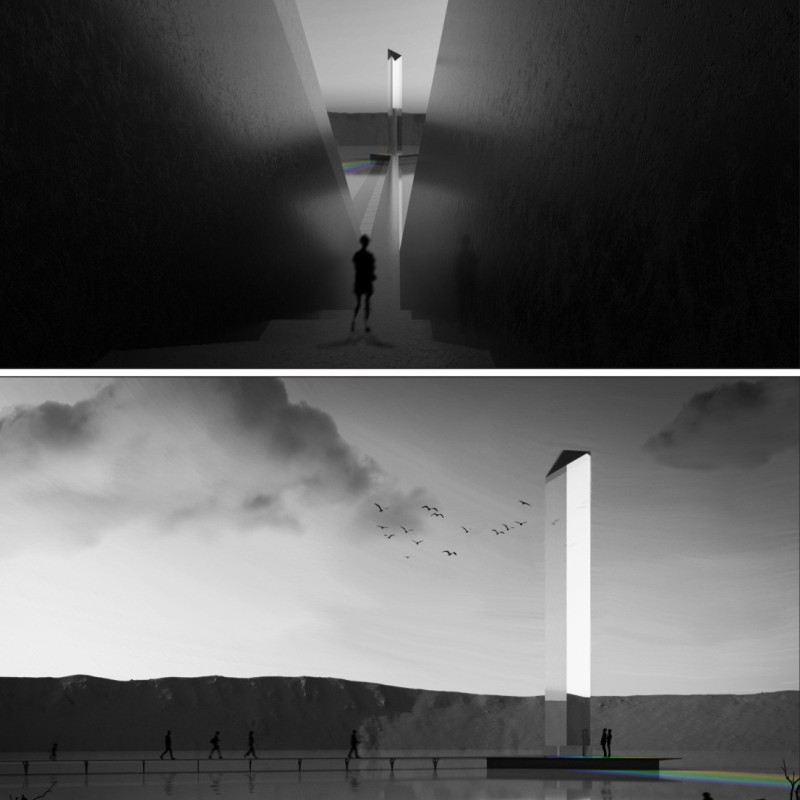5 key facts about this project
At its core, the design prioritizes user experience, promoting a fluid relationship between indoor and outdoor spaces. Large, strategically placed windows allow natural light to permeate the interior, creating a welcoming atmosphere that emphasizes transparency and openness. This thoughtful approach does not merely enhance visual aesthetics; it also encourages occupants to engage with the surrounding environment, making the exterior landscape an integral part of the overall design.
The layout of the project is intentionally crafted to accommodate varying uses, from collaborative workspaces to serene areas for contemplation. The arrangement reflects a deep understanding of human behavior and the dynamics of social spaces. Communal areas are designed to foster interaction, allowing for a flexible flow where individuals can comfortably collaborate or retreat into quieter corners. These spatial strategies underscore the importance of community within the architectural framework, ensuring that the building serves as a hub for both creativity and connection.
The materiality of the project is another crucial aspect that deserves attention. A careful selection of materials enhances both the visual character of the building and contributes to its sustainable agenda. Concrete offers a robust foundation, while the use of local stone provides a sense of authenticity and permanence. Warm wood accents soften the overall appearance and foster an inviting ambience, effectively balancing contemporary finishes with natural elements. The design intentionally utilizes materials that have a low environmental impact, emphasizing the project’s commitment to sustainability.
Unique design approaches are evident throughout the project. For instance, the incorporation of green roofs and living walls not only adds visual richness but also supports biodiversity in the urban landscape. These features promote insulation and contribute to energy efficiency, aligning with the broader goals of environmental sustainability. Additionally, the integration of rainwater harvesting systems demonstrates a forward-thinking mindset, capturing and utilizing resources that minimize reliance on municipal supplies.
Landscaping plays a pivotal role in establishing a cohesive relationship between the structure and its environment. Outdoor spaces are designed with various activities in mind, encouraging recreational use while enhancing the building's overall functionality. The landscape design complements the architectural elements, employing native plants that require less maintenance and foster ecological harmony. The thoughtful planning of these spaces reveals an understanding of how architecture can extend beyond its walls and contribute positively to the urban ecosystem.
As potential visitors explore the project, they will find that it serves as a living example of how architecture can enhance everyday life. The careful relocation of communal areas adjacent to quieter, introspective zones highlights a nuanced understanding of the complexities of human interaction within spatial contexts. This project is not merely an aesthetic endeavor but a comprehensive design that seeks to harmonize building functions with the needs and aspirations of its occupants.
To gain deeper insights into the project's various elements, including architectural plans, architectural sections, and architectural designs, prospective audiences are encouraged to explore the detailed project presentation. This exploration will reveal the full range of architectural ideas that underlie the project, showcasing an innovative blend of design principles and functional strategies that define its character.


 Yuntian Zhang,
Yuntian Zhang,  Fengxue Xia,
Fengxue Xia, 




















